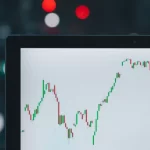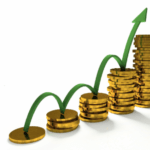The Nasdaq stands for the National Association of Securities Dealers Automated Quotation System. Founded in February 1971, over the last 50 years the Nasdaq stock exchange has become the world’s second-largest marketplace for trading equities after the New York Stock Exchange.
It shot to notoriety after becoming the world’s first fully electronic stock market, attracting companies which had previously chosen to sell their shares in alternative platforms to legitimate stock exchanges.

What do we mean when we say electronic stock market? Unlike the New York Stock Exchange, there’s no land-based trading floor for the Nasdaq exchange. All trades on the Nasdaq stock market are concluded digitally.
The makeup of the Nasdaq stock exchange
There are three tiers of US stock markets on the Nasdaq exchange. The Nasdaq Global Select Market is home to approximately 1,200 large-cap corporations. These firms must post $11m in total pre-tax earnings in the previous three years of trading. The Nasdaq Global Market is the marketplace for mid-cap equities – around 1,450 of them to be precise. These firms must have generated at least $1m in pre-tax income.
Meanwhile, the Nasdaq Capital Market is the third and final market tier, home to small-cap corporations with at least $4m in shareholder equity and $5m in publicly held shares.
Today, one of the biggest focuses on the Nasdaq stock market is tech stocks. The exchange has attracted many of the biggest and best technology brands on the planet, namely Alphabet (Google), Facebook, Amazon, Microsoft and Apple. Consequently, the Nasdaq gets significant attention from investors and retail traders, especially around the time of major updates relevant to the US economy.
For instance, the US – and many other nations – have been grappling with the threat of rampant inflation in the last 12-to-18 months. CPI data helps to determine whether interest rate hikes are working. CPI prints are some of the main dates on the global economic calendar for developed economies. Easing inflation gives central banks the chance to take stock and potentially cut interest rates, which is a major boost for tech firms that often rely heavily on cheap borrowing to innovate and grow.
The most famous initial public offerings (IPOs) on the Nasdaq

The Nasdaq stock market has been the platform of choice for countless IPOs through the years. For example, Apple chose to list their shares on the Nasdaq in 1980 and Microsoft took similar steps in 1986, shunning the New York Stock Exchange in favour of this forward-thinking marketplace.
There’s been plenty of headline-making IPOs on the Nasdaq more recently too. Facebook Inc – now known as Meta – launched its IPO in May 2012 at a value of $81.25bn. In December 2020, Airbnb opted to list its stock through the Nasdaq, with the accommodation portal valued at $40.9bn.
In November 2021, Rivian Automotive Inc. also chose to list on the Nasdaq, becoming the fifth most valuable company in history at the time of its IPO ($66.5 billion).
Today, the Nasdaq stock market operates five days a week from Monday to Friday and opens from 9.30 am until 4 pm ET. Traders on the Nasdaq benefit from access to state-of-the-art reporting and analytical tools, as well as integrated trading software to get exposure to the world’s biggest tech firms.
Join 25,000+ smart readers—don’t miss out!






